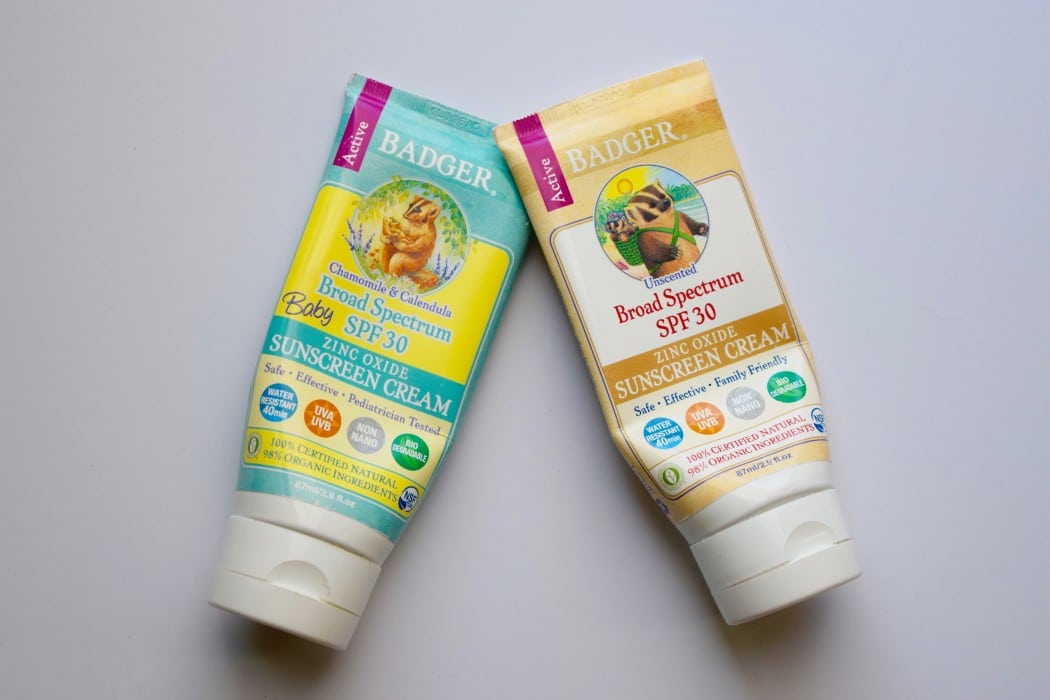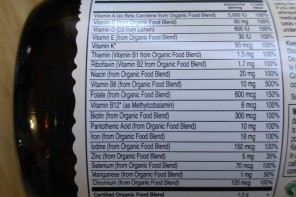With the warm weather, we have been spending a great deal of time outdoors. Plus, with so many outdoor festivals and street fairs and with upcoming county fairs and Memorial Day bbqs… I thought it wise to discuss sunscreens/sunblocks. Of all the skin care products out there, sunscreen seems to be the one that most highly recommended and the most essential. Not only does it protect your skin from painful sunburn, it helps to prevent skin cancer. But how does it work and is it safe?
How does it work?
Although doctors know that sunscreens protect your skin, little is known about the safety of many ingredients used in common brands. Before we continue, let’s review how sunscreen works. When UV rays penetrate your skin, the frequency of those particular light rays is what damages the skin. A sunscreen uses a chemical to absorb the UV rays of the sun before they reach your skin. If there are rays that get through that chemical “screen”, they are converted into a wavelength that is safer for the skin to absorb. A sunblock uses ingredients that essentially reflect these UV rays, preventing them from reaching your skin. For the purpose of this article, I will refer to both in general as a sunscreen.
Is it safe?
Now let’s discuss the safety of these products. Unfortunately, the FDA has been delaying for decades to set any sunscreen guidelines. This means that companies can pretty much put whatever they want in and say what every they want about their product. In fact, most of the big brand sunscreen that you would typically find people using really do not provide that much protection at all from UV rays. And on top of that, most contain dangerous chemicals. Consider this: a link between frequent sunscreen users and a risk of melanoma has been found. This could be because so many sunscreens do not protect from the full spectrum of UV rays (UVB and UVA) and it could also be because most frequent sunscreen users spend a great deal of time in the sun.
Sunscreens:
Sunscreens often use chemicals such as oxybenzone and 4-MBC which are known hormone disruptors in the human body. In fact, scientists have asked parents to avoid using oxybenzone because of it’s toxicity and have instead recommended safer ingredients such as avobenzone. But because the chemicals used to protect the skin are not regulated by the FDA, companies are using unstable and unregulated ingredients. Even if they protect well for a short amount of time, they often break down very quickly, increasing your chance of damage. Other ingredients that are commonly added, such as retinol palmate (Vitamin A) are dangerous. Vitamin A, although is great for anti-aging and skin cell turnover, can increase your chance of developing skin cancer. And on top of all that, most sunscreens contain those yucky and harmful chemicals such as parabens. Here’s the kicker: many of these ingredients that preserve the sunscreen, or make your skin feel soft, increase free radical damage to your skin.
Sunblocks:
Sunblocks are a better choice, but not always safe. They use ingredients such as titanium dioxide and zinc oxide in order to block sunlight physically. These are excellent in preventing UV rays (particularly UVA), and rate high on EWG’s sunscreen rating scale. However, if they are used in powders or sprays as nano-particles, they can be inhaled, from which the results are unknown. Also, keep in mind that may contain other harmful ingredients, so read those labels!
SPF Ratings: the higher the better?
In terms of the SPF rating, higher ratings are not always safer! Companies such as Walgreens, CVS, and Neutrogena make claims that their SPF 50 + products offer better and more protection. However, because these claims are not regulated or certified, there is little proof that they are true. Evidence suggests that higher SPF products do not block or absorb UVA rays as well as lower SPF products. Also, even if they do work, people are staying in the sun longer because they feel they are better protected which increases their chance for skin damage. So after the sunscreen has broken down, washed off, or was wiped off, people are still in full sunlight because they believe they are better protected. Even if you are using sunscreen, you are still absorbing radiation, so no matter what SPF you are using, sun exposure should not be prolonged.
I’ll just become a vampire! I would love to be glittery, anyway.
Before you hide in the shadows, remember that the sun provides Vitamin D, a necessary nutrient for a healthy body. Too much time inside and out of the sun can result in a Vitamin D deficiency. So, like almost everything else, moderation is key when in comes to sunlight.
What the heck do I use?!
If you are in Europe, you have a wide selection of very safe and effective sunscreens and sunblocks. For those of us in the U.S., we have a limited choice in what we can safely use. EWG’s website has a great rating system of available sunscreens and sunblocks to help you make the decision that’s right for you. I use Badger’s sunscreen and really love it, so I recommend checking out your local health food store to see what it has to offer. And don’t forget to protect your eyes and scalp! Sunglasses and a hat are a must. Clothing like long sleeve shirts and rash guards are also great options to help protect your skin.
Here are some great brands to start with:
100{33a567f4c07c8c413e7e9e9d9be2242a7b8a132d09d89d1c03680e3e8f95cc61} Pure





